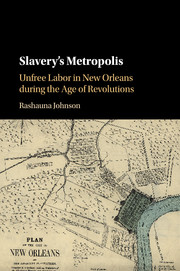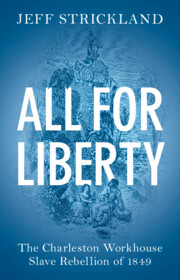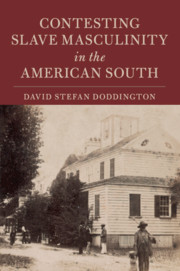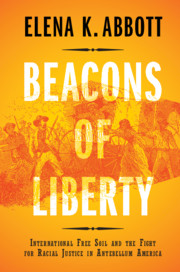Slavery's Metropolis
New Orleans is an iconic city, which was once located at the crossroads of early America and the Atlantic World. New Orleans became a major American metropolis as its slave population exploded; in the early nineteenth century, slaves made up one third of the urban population. In contrast to our typical understanding of rural, localized, isolated bondage in the emergent Deep South, daily experiences of slavery in New Orleans were global, interconnected, and transient. Slavery's Metropolis uses slave circulations through New Orleans between 1791 and 1825 to map the social and cultural history of enslaved men and women and the rapidly shifting city, nation, and world in which they lived. Investigating emigration from the Caribbean to Louisiana during the Haitian Revolution, commodity flows across urban-rural divides, multiracial amusement places, the local jail, and freedom-seeking migrations to Trinidad following the War of 1812, it remaps the history of slavery in modern urban society.
- Proposes a new view of the place of slaves in everyday society in New Orleans in contrast to works that focus on free people of color
- Organized thematically by place rather than linearly by chronology to study many different enslaved actors rather than a single person or family
- Uses theoretical frameworks to interpret archival accounts written in French, English, and Spanish to illuminate broader points about slavery
Reviews & endorsements
'Via the Atlantic slave trade or the Haitian Revolution, Slavery’s Metropolis offers a compelling narrative regarding the relocation of people of African descent to New Orleans. Johnson’s impressive research reminds her readers that although black men, women, and children occasionally found windows to escape, their journey to New Orleans typically represented the end of freedom. This is a timely and important contribution to the fields of early African American and urban history.' Erica Armstrong Dunbar, University of Delaware
'Slavery’s Metropolis is an extraordinary work, full of intellectual insights and archival discoveries. Professor Johnson has linked sources and read against the grain to reveal a picture of enslaved people’s lives that will in turn change how we understand the elusive concept 'Atlantic World.' And it’s a good read.' Edward E. Baptist, Cornell University
'In this marvelous book, Rashauna Johnson talks back to a whitewashed history of New Orleans. She strips back layers to reveal how slaves made the city in a revolutionary era, how they were simultaneously set in motion and confined. Slavery's Metropolis will be relished by students of slavery and urban life in the United States and the broader Atlantic World.' Adam Rothman, Georgetown University, Washington
Product details
January 2018Paperback
9781107591165
258 pages
230 × 153 × 20 mm
0.36kg
10 b/w illus. 4 maps
Available
Table of Contents
- 1. Revolutionary spaces
- 2. Market spaces
- 3. Neighborhood spaces
- 4. Penal spaces
- 5. Atlantic spaces
- Conclusion. Modern spaces.





